Gentiana scabra
Gentiana scabra
1. The products in our compound library are selected from thousands of unique natural products; 2. It has the characteristics of diverse structure, diverse sources and wide coverage of activities; 3. Provide information on the activity of products from major journals, patents and research reports around the world, providing theoretical direction and research basis for further research and screening; 4. Free combination according to the type, source, target and disease of natural product; 5. The compound powder is placed in a covered tube and then discharged into a 10 x 10 cryostat; 6. Transport in ice pack or dry ice pack. Please store it at -20 °C as soon as possible after receiving the product, and use it as soon as possible after opening.
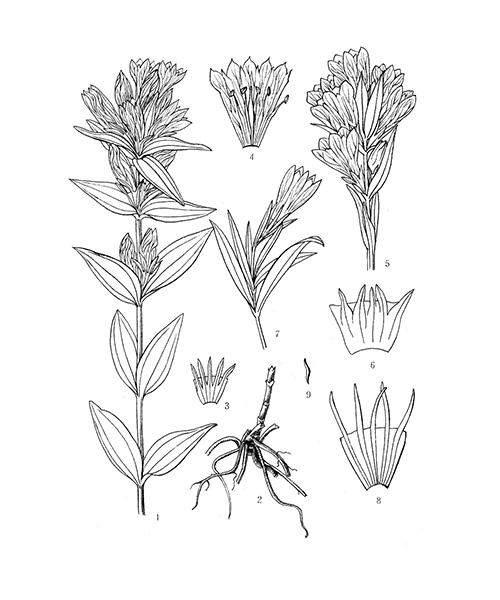
Natural products/compounds from Gentiana scabra
- Cat.No. Product Name CAS Number COA
-
BCN2814
6'-O-beta-D-Glucosylgentiopicroside115713-06-9
Instructions
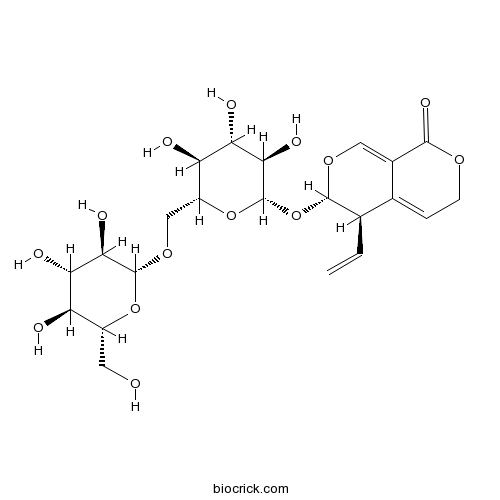
-
BCN1153
Loganin18524-94-2
Instructions
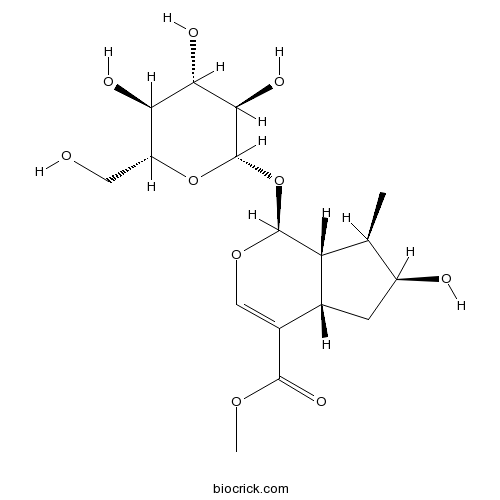
-
BCN4909
Gentiopicroside20831-76-9
Instructions

-
BCN5057
Loganic acid22255-40-9
Instructions
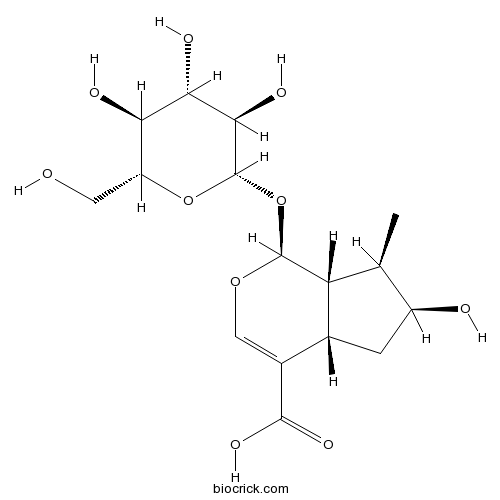
-
BCN5441
Isovitexin38953-85-4
Instructions
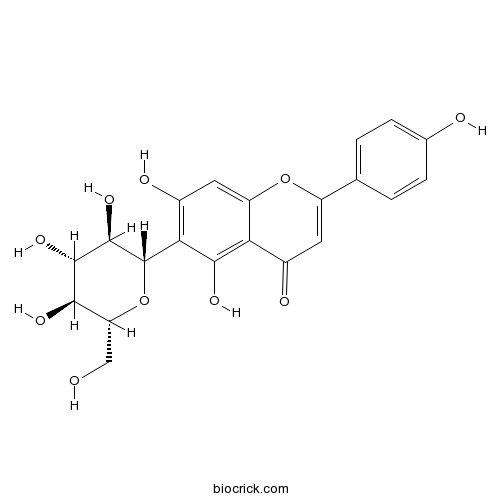
-
BCN5503
Corosolic acid4547-24-4
Instructions

-
BCN5653
Kaempferol520-18-3
Instructions

-
BCN5725
Lupeol545-47-1
Instructions

Gentiana scabra Bunge. Formula for Herpes Zoster: Biological Actions of Key Herbs and Systematic Review of Efficacy and Safety.[Pubmed: 28078812]
This study reviewed the biological action of key herbs and evaluated systematically the efficacy and safety of oral Gentiana formula for herpes zoster (HZ). Experimental studies relevant to HZ were identified in PubMed. Randomized controlled trials using Gentiana formula for HZ were identified from nine English and Chinese databases. The primary outcome was evaluation of pain. Potential risk of bias was assessed. Meta-analysis was conducted using mean difference or risk ratio with 95% confidence intervals. Key herbs Gentiana scabra Bunge, Gentiana triflora Pall, Scutellaria baicalensis Georgi, and Gardenia jasminoides Ellis have shown antiinflammatory actions through inhibition of inflammatory cytokines and pro-inflammatory enzymes. Twenty-six clinical studies, involving 2955 participants, were included. Modified Gentiana formula resolved pain earlier than pharmacotherapy when used alone or combined with topical Chinese herbal medicine. Incidence of postherpetic neuralgia was lower (risk ratio 0.14, 95% confidence interval 0.03 to 0.74) with modified Gentiana formula plus topical Chinese herbal medicine. Mild adverse events were reported. Antiinflammatory actions of key herbs of Gentiana formula may explain clinical benefit in hastening pain relief and decreasing postherpetic neuralgia. Few adverse events were reported. Findings were limited by study quality and diversity in intervention and comparator dosage.
Extraction optimization, characterization and antioxidant activity of polysaccharide from Gentiana scabra bge.[Pubmed: 27565299]
None
Gentiana scabra Reduces SR-A Expression and Oxidized-LDL Uptake in Human Macrophages.[Pubmed: 27471359]
Macrophages can imbibe low-density lipoprotein (LDL) through scavenger receptors to become foam cells, which is critical in the initiation and progression of atherosclerosis. Mounting evidence suggests that the anti-inflammatory nature of Chinese herbs have the capacity to halt the complex mechanisms underlying atherosclerosis. This study examined the effects of Chinese herbs on foam cell formation.
Purification, characterization and in vitro anticoagulant activity of polysaccharides from Gentiana scabra Bunge roots.[Pubmed: 26876858]
Three water-soluble polysaccharide fractions (GSP-1, GSP-2 and GSP-3) were obtained from Gentiana scabra Bunge roots by DEAE-Sepharose CL-6B and Sepharose CL-6B column chromatography. Their chemical characterizations were determined by high performance gel permeation chromatography (HPGPC), high performance anion exchange chromatography coupled with pulsed amperometric detection (HPAEC-PAD) and Fourier transform infrared (FT-IR) spectrometer. Moreover, their in vitro anticoagulant activities were evaluated by activated partial thromboplastin time (APTT), thrombin time (TT) and prothrombin time (PT) assays. GSP-1 and GSP-2 were composed of rhamnose, arabinose, galactose, glucose and galacturonic acid, while GSP-3 consisted of rhamnose, arabinose, galactose and galacturonic acid with a weight-average molecular weight of 5.8×10(4)Da. In comparison with the control group (saline), GSP, GSP-1, GSP-2 and GSP-3 could prolong APTT and TT, but not PT. Overall, GSP-3 exhibited potent anticoagulant activity and would be expected to be a potential source of anticoagulant.
Functional characterization of duplicated B-class MADS-box genes in Japanese gentian.[Pubmed: 26769577]
The heterodimer formation between B-class MADS-box proteins of GsAP3a and GsPI2 proteins plays a core role for petal formation in Japanese gentian plants. We previously isolated six B-class MADS-box genes (GsAP3a, GsAP3b, GsTM6, GsPI1, GsPI2, and GsPI3) from Japanese gentian (Gentiana scabra). To study the roles of these MADS-box genes in determining floral organ identities, we investigated protein-protein interactions among them and produced transgenic Arabidopsis and gentian plants overexpressing GsPI2 alone or in combination with GsAP3a or GsTM6. Yeast two-hybrid and bimolecular fluorescence complementation analyses revealed that among the GsPI proteins, GsPI2 interacted with both GsAP3a and GsTM6, and that these heterodimers were localized to the nuclei. The heterologous expression of GsPI2 partially converted sepals into petaloid organs in transgenic Arabidopsis, and this petaloid conversion phenomenon was accelerated by combined expression with GsAP3a but not with GsTM6. In contrast, there were no differences in morphology between vector-control plants and transgenic Arabidopsis plants expressing GsAP3a or GsTM6 alone. Transgenic gentian ectopically expressing GsPI2 produced an elongated tubular structure that consisted of an elongated petaloid organ in the first whorl and stunted inner floral organs. These results imply that the heterodimer formation between GsPI2 and GsAP3a plays a core role in determining petal and stamen identities in Japanese gentian, but other B-function genes might be important for the complete development of petal organs.
Triterpenoids isolated from the rhizomes and roots of Gentiana scabra and their inhibition of indoleamine 2,3-dioxygenase.[Pubmed: 26163101]
Gentiana scabra Bunge (Gentianaceae) is an important traditional Chinese medicine commonly used as a stomachic or appetite stimulant. In this study, 21 triterpenoids (1-21) were isolated from a methanol extract of the rhizomes and roots of G. scabra. Their structures were elucidated by comparing spectroscopic data with reported values. Among the isolated triterpenoids, scabanol (2) was firstly isolated from natural sources. All isolated compounds were evaluated for their inhibitory activity against indoleamine 2,3-dioxygenase (IDO), which catalyzes the rate limiting reaction for the conversion of tryptophan to kynurenine. Compounds 10 and 11 showed significant inhibitory activities, with IC(50) values of 12.5 and 9.5 μM, respectively. Compound 12 showed a moderate inhibitory effect, with an IC(50) value of 18.7 μM. Compounds 2 and 13 showed weaker inhibitory effects, with IC(50) values of 56.8 and 60.6 μM, respectively. Kynurenine is a potent immune modulator to suppress the functions of a variety of immune cells including T cells and natural killer cells. Given that, our results that a few selected triterpenoids inhibit IDO warrant further studies on their effects on the host immune system as natural immune stimulators.


